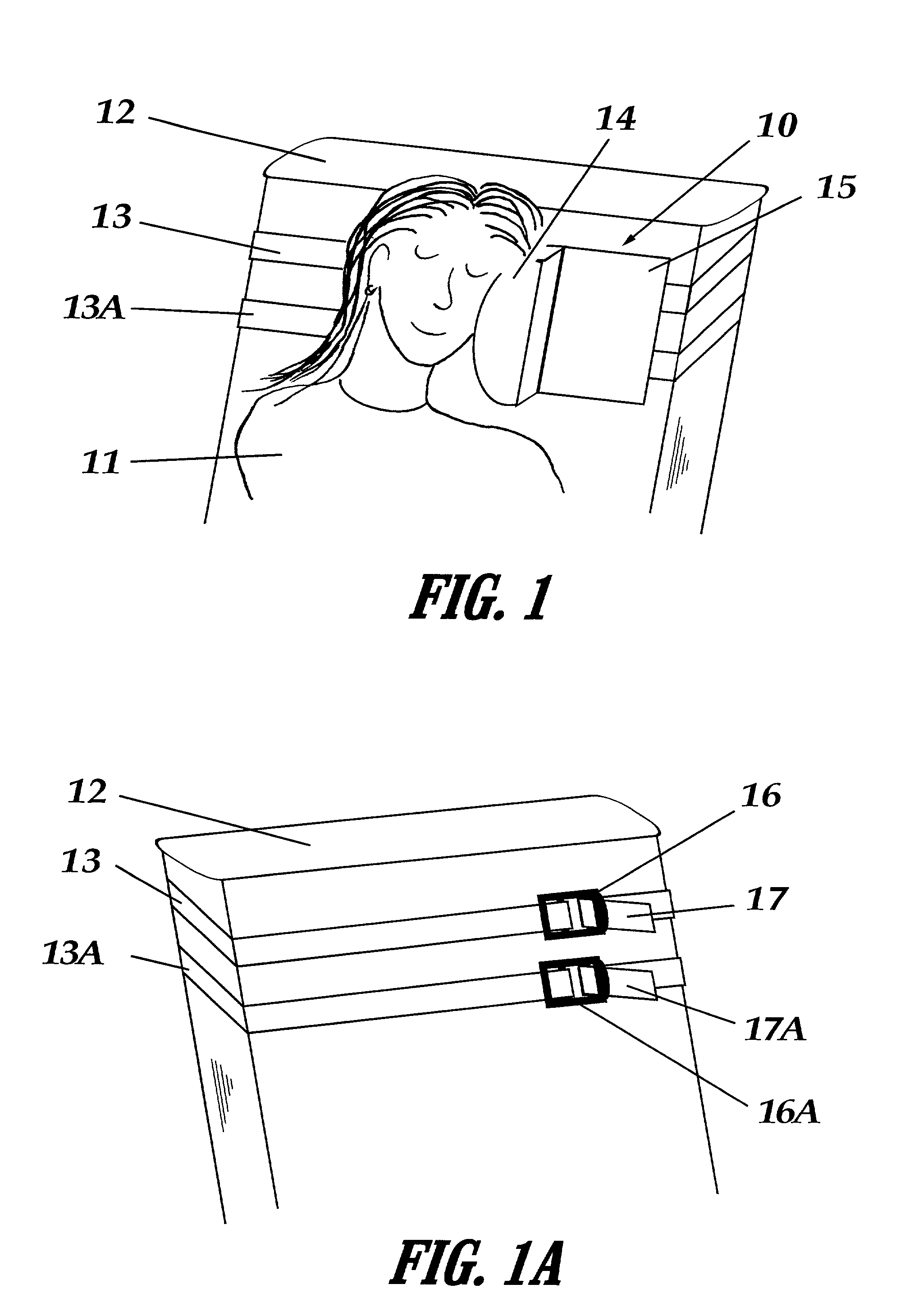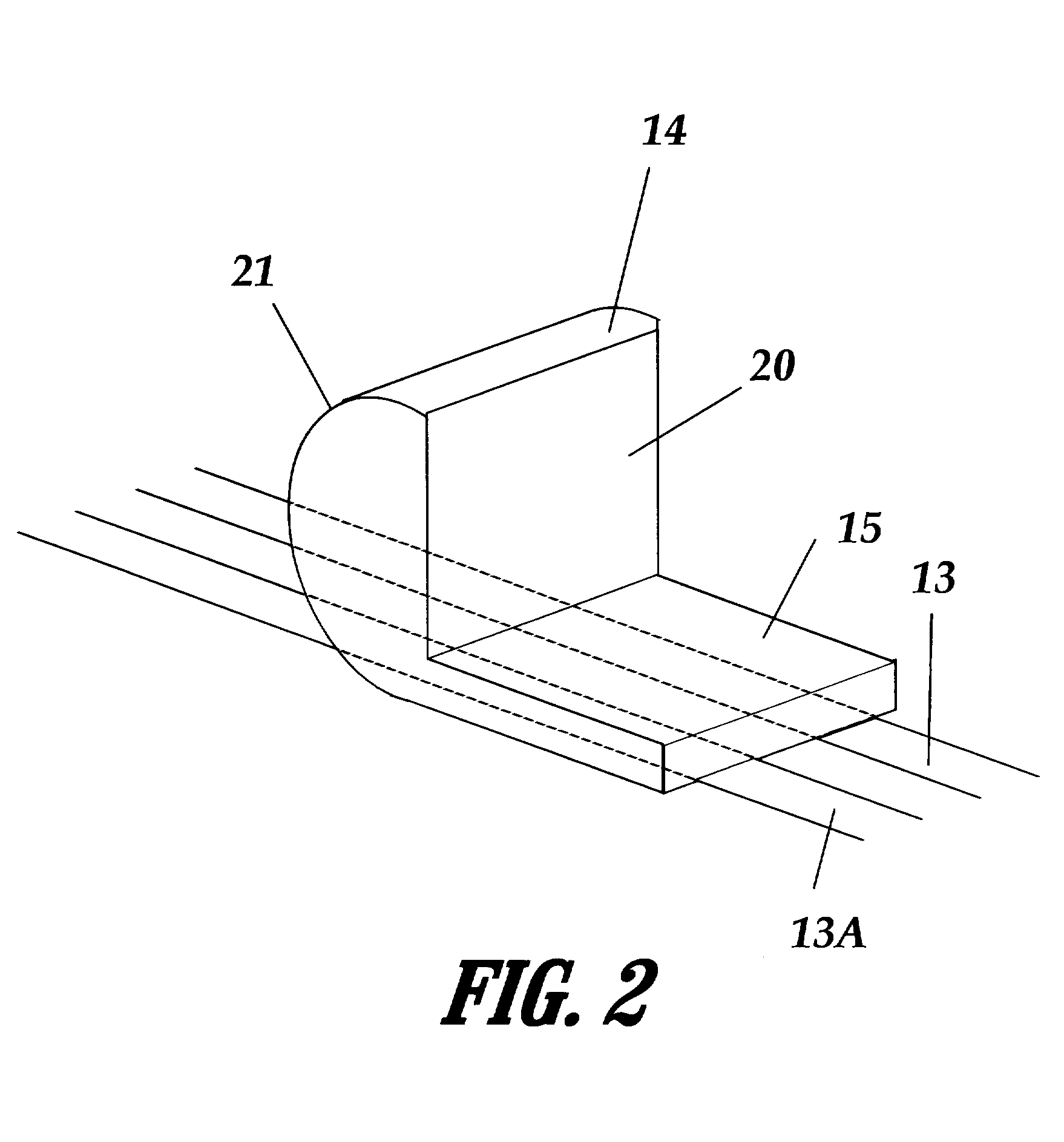This eventually causes
muscle strain and extreme discomfort for most travelers.
A more immediate problem, however, is that by falling into a deeper state of relaxation, the head may suddenly fall to one side, waking the passenger and making the possibility of restful sleep remote or hopeless.
The possible
spatial orientations of this ad hoc solution are incredibly limited, and the pillow is held fast only by the force of the user's head.
Patients in hospitals and
nursing homes face the same problem when sitting in an upright chair.
However, health-care professionals often struggle to find ways of providing lateral head-and-neck support for patients in these high-backed chairs.
This is a particularly acute problem for sufferers from advanced forms of Parkinson's
disease or certain survivors of
stroke, whose muscle control is severely impaired.
In an upright chair, such patients' heads will often lean abnormally to one side, muscles in the opposite side of the neck rigidly straining to keep the head from falling over.
As happens with sleepy travelers, the pillows used with a geriatric chair usually soon fall out of place.
Rather than providing needed support and accommodating the abnormal leaning, these devices force patients' heads into a fully straight position, which is often uncomfortable.
Patients and health-care professionals also dislike these head-surrounding devices because of their constricting and restraining nature, which is undesirable in attempting to provide a
care setting that is as normal, comfortable, and humane as possible.
While providing considerable lateral support, this device encloses the head on both sides, restraining the user's head and restricting movement.
The clamp like mechanism for attaching Cruickshank's headrest is awkward and the screw-in attachment-means can damage the chair.
This sheet restricts the vertical position of the headrest on the back of the chair, and thus Arias' apparatus cannot adjust for differing heights of chairs or users.
Further, the
inflatable modules against which the head is to rest do not extend far enough from the seat back and are too rounded to fully support a person's head and prevent it from rolling forward off the apparatus and then down to the chest or shoulder.
One problem with Fishbane is that the primary element of this pillow is behind the user's head, not to the side of it.
Like Cruickshank's device, this pushes the head forward relative to the body, which tends to defeat the ability of the user to fall asleep.
Thus, as with Arias' apparatus, Fishbane's pillow provides very little lateral support--not enough for an upright user to rest the full weight of his
head and neck on the support without the head rolling or drooping.
Additionally, the position of the lateral supports cannot be horizontally adjusted either.
Schreiner's floppy lateral support could not support a fully relaxed
human head unless the
chin strap is used, thereby greatly restricting movement of the head.
The clamping mechanism is awkward both in use and storage.
Further, the surface of the headrest is of such a size and shape that the user must predetermine exactly which position in which he or she will sleep.
Any movement during sleep will cause the user to be beyond the headrest's supporting surface, or will cause the supporting surface to connect uncomfortably with a portion the ear or face.
Some devices with a larger surface for lateral support do not attach securely to a seat back, thus largely or completely defeating the purpose of allowing the user's
head and neck fully to relax.
This device, while providing considerable lateral support, may only be used in certain very limited situations, such as having an adjoining seat sufficiently close to allow the device to be wedged in between seats for secure placement.
However, once threaded, it is only necessary to loosen and tighten the straps to store the headrest or transport it to a different chair.
If the excess strap lengths are long and bothersome, they may be tucked between the surface of the seat back and the snug portions of the straps.
 Login to View More
Login to View More  Login to View More
Login to View More 


